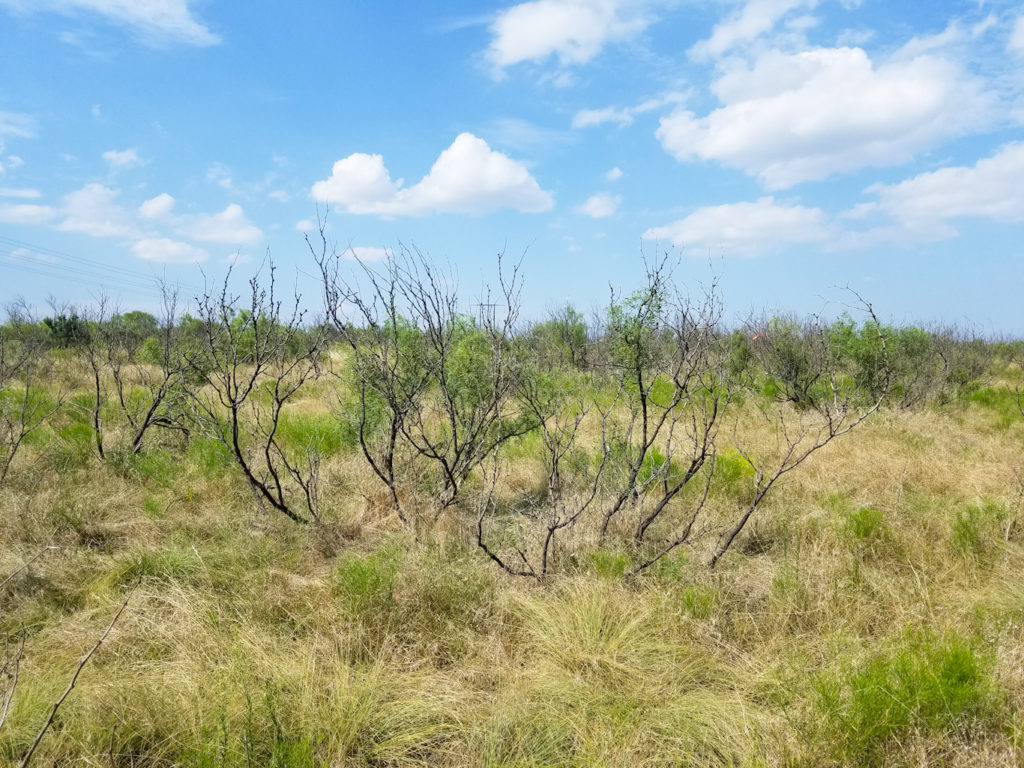Researchers across Texas A&M System launch grassland revitalization partnership
Initiative to address top concerns of Texas landowners, grassland managers
An interdisciplinary team of researchers across the Texas A&M University System recently received grant funding from the U.S. Department of Agriculture’s National Institute of Food and Agriculture for research, education and outreach relating to grassland revitalization in Texas.

The grant provided $364,854 in funding to create the Restore Texas Grasslands Revitalization Partnership—an initiative of researchers and faculty from Texas A&M AgriLife Research, Tarleton State University and the Botanical Research Institute of Texas, BRIT.
Addressing dynamic issues with diverse expertise
This partnership aims to create a synergistic, interdisciplinary program, which focuses on building capacity within the Texas A&M University System and reaching external stakeholders to foster education, research and outreach programs relating to the sustainable management of grassland ecosystems in Texas.
“Texas A&M AgriLife is committed to supporting our natural environment through 21st century education, research and extension to all Texans,” said Patrick Stover, Ph.D., vice chancellor of Texas A&M AgriLife, dean of the College of Agriculture and Life Sciences and director of AgriLife Research. “This project demonstrates the commitment of Texas A&M to developing solutions to environmental challenges faced by our communities through ecology and natural resource management.”
One of the strengths of this partnership is the diversity and varied expertise of their team.
Darrel Murray, Ph.D., and Adam Mitchell, Ph.D., both assistant professors at Tarleton State University, are the lead investigators on the grant project. Others on the team are Caitlyn Cooper, Ph.D., AgriLife Research, Vernon; William Fox, AgriLife Research, Temple; Jeff Brady, AgriLife Research, Stephenville; and Cameron Barlow, BRIT, Fort Worth.
Murray said this partnership has been in development since 2014 and evolved out of a proposal to merge disciplines in ecology, management, conservation, engineering, political science, economics and social sciences to address knowledge gaps pertaining to ecosystem-scale land management decisions.
“The common thread in our work is grassland research,” Murray said. “However, each of us brings different experience, skills and perspectives that will enable us to conduct research relating to topics identified as top priorities of landowners and grassland managers in Texas.”
Drawing from the concerns of these stakeholders, the team has chosen three research priority areas to guide future studies – woody plant expansion, water resources and soil health.
This research will focus on developing innovative approaches to revitalizing, managing and conserving land to uniquely solve modern landowners’ issues and meet their needs, while contributing to the resilience and benefit of society.
Building capacity to meet societal needs
To accomplish these aims, the Restore Texas Grassland Revitalization Partnership recognizes the necessity of sparking dialogue with today’s Texas landowners and stakeholders to address their values and concerns.
Fox, a rangeland ecologist with the Department of Rangeland, Wildlife and Fisheries Management, said this dynamic population exists outside of the standard clientele of landowners, producers and those within the land-grant system.
“Our clientele was originally landowners and producers,” Fox said. “Our clientele are becoming large corporations who are getting on board with conservation efforts and recognize that land is going to be one of the prime pieces that keeps everything going in the future.”
The team stated that other growing stakeholder groups include absentee landowners and those with primary interests in wildlife, recreation, parks and tourism.
Murray said projects like this help to promote the Texas A&M System’s role in helping to solve societal issues as a public institution.
“With a large urban and suburban population in Texas, we want to remind everyone of the connection and value of surrounding grasslands,” Murray said.
Fox echoed these statements, saying one of the main goals of this project is to build capacity for strong partnerships between Texas A&M institutions and expand outreach efforts.
“We have to get to the point where urban and rural communities are speaking at the same table,” Fox said. “This partnership is a way to build bridges between urban and rural systems so that education regarding grassland management and its benefits to society can take place.”
Providing experience through hands-on learning
Another key component of the USDA grant-funded project is to provide high-impact learning experiences and research opportunities for graduate and undergraduate students, specifically those who might be underrepresented in these fields as students and professionals.
“This program will leverage and expand ongoing grassland research and outreach by facilitating communication and coordination among partners, while increasing the capacity of TAMU System institutions to recruit, retain and educate a diverse population of graduate and undergraduate students in agriculture and natural resource programs,” Murray said.
Students will have the opportunity to collaborate with faculty on research projects relating to grassland management and present their findings at an undergraduate research symposium.
Additionally, some students chosen to participate in the project will intern with BRIT and assist with coordinating outreach activities and educational workshops.
Cooper, a rangeland ecophysiologist will begin a new role as assistant professor in the Department of Natural Resource Management at Texas Tech University but remain on the team. Cooper said she hopes this aspect of the partnership will familiarize students with range science and develop their capacity as advocates in the field.
“The ultimate goal is that students come out of this experience as more informed citizens and agricultural advocates,” Cooper said. “They are going to be voters in the future; and what they learn about grasslands and rangeland management in this program can potentially have a big impact on their local communities later on.”
Cooper, Fox and Murray all stressed that the nature of these hands-on, interactive learning experiences will help students foster technical knowledge and interpersonal skills—both vital assets for future graduates looking to enter the workforce in a related discipline.
Plans are in place to begin research and phase one of the three-year project in the fall.
For more information on Texas A&M’s role in the Restore Texas Grassland Revitalization Partnership, email Fox at [email protected].
Story by Carrie Baker, Department of Rangeland, Wildlife and Fisheries Management



